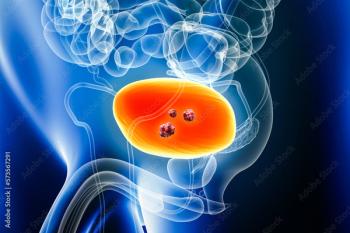
When Making Cuts Can Increase Expenditures: Why Eliminating Pharmacy Positions Could be a Costly Mistake for Hospitals

Asking pharmacists to do even more work while paring down their support is not a sustainable solution to increasing costs.
In nearly every industry, we live in a bottom-line world. For the health care industry, leaders have had to make some difficult decisions in the past several years. In addition to “intense pressure on staff and resources” and “broad and serious threats” to the industry, the
In the “Current State of Hospital Finances” update last fall, the AHA notes that hospital margins remain depressed relative to pre-pandemic levels and that expenses have stayed “significantly elevated” compared to pre-pandemic levels and are still increasing. But a major headline of the report is that labor expenses are projected to increase by $86 billion, nearly twice the growth of non-labor expenses.
By looking at those numbers, it’s easy to predict where many leaders will see an easy solution: cutting labor expenses seems like the obvious choice. However, which labor costs to cut is not always that simple—especially taking into consideration the pharmacy technician shortage already disrupting the health care sector.
In prior years, I often noticed that when hospital leadership decided to lay off workers in an attempt to cut costs, some of the most vulnerable staff members are the pharmacy technicians. More often than not, there are far more technicians in those departments than pharmacists, and they can be perceived as expendable. That perception, however, is starting to shift as the health care industry faces a pharmacy technician shortage, as nearly 1 in 10 pharmacy administrators in hospitals revealed that they have lost 41% or more of their technicians.2
Each time a technician is cut, a pharmacist is tasked with doing more of the day-to-day work required at the pharmacy. The elimination of every technician leads to pharmacists spending time ordering medications, stocking supplies, labeling prescriptions and more—something 89% of pharmacy executives say is already happening.3
Instead of working directly with physicians or other medical staff on patient care, pharmacists’ time is replaced by these kinds of tasks. Rather than using their expertise to oversee the effective and efficient use of resources in their departments, they’re left scrambling to do work typically taken care of by technicians. All that scrambling can lead to burnout, mistakes, and poorer patient outcomes.
And the burnout being felt by pharmacists isn’t just speculation. A
Contributing to that kind of burnout doesn’t just lead to increased costs—it’s dangerous. Ultimately, health systems need to understand that most of the costs associated with hospital pharmacies (and hospital systems as a whole) are not related to labor. In fact, systems should look to medications to find savings.
Drug costs represent a massive expense, and during the height of the pandemic, those costs made for the largest increase in hospital expenses, rising
Studies at the beginning of
Those costs put an extra onus on pharmacists to be responsible, efficient, and precise in their management of medications. But if pharmacists are overworked, burned out, and generally have less time to dedicate to medication savings initiatives, opportunities can arise for mistakes and waste that could add to the already rising drug costs.
Even worse, pharmacist burnout and overburdening can have a serious impact on patients. The inefficient or improper management of medications can lead to errors, decreased patient satisfaction and, in some cases, even fatalities due to mistakes.
One
As so many hospitals navigate financial difficulty in a post-COVID world and plan for rising costs, administrators could ultimately do more harm than good by ignoring the input of their pharmacy experts.
Asking pharmacists to do even more work while paring down their support is not a sustainable solution to increasing costs. But given that the health of patients is on the line, in addition to a compelling case for those cuts hurting more than harming, it becomes clear that the wrong cuts in the wrong places could end up costing more than administrators can hope to save.
About the Author
Michael D. Brown, vice president of managed services, Health System and Provider Distribution & Services, Cardinal Health.
References
1. American Hospital Association, Kaufman, Hall & Associates, The Current State of Hospital Finances: Fall 2022 Update.
2. Pharmacy technician shortage survey findings executive summary. American Society of Health-System Pharmacy. March 2020. Accessed October 19, 2022.
3. Hospitals and Health Systems Experiencing Severe Shortage of Pharmacy Technicians. American Society of Health-System Pharmacy. April 2023. www.ashp.org/news/2022/03/15/hospitals-and-health-systems-experiencing-severe-shortage-of-pharmacy-technicians. Accessed April 2023.
4. Dee J, Dhuhaibawi N, Hayden JC. A systematic review and pooled prevalence of burnout in pharmacists. Int J Clin Pharm. 2022 Nov 29:1–10. doi: 10.1007/s11096-022-01520-6.
5. Kaffman, Hall & Associates, National Hospital Flash Report, (p.20).
6. Tori Marsh, MPH, GoodRX, Live Updates: January 2022 Drug Price Increases.
7. 46Brooklyn, Welcoming a New Year with new drug prices.
8. Sarah P Slight, Diane L Seger, Calvin Franz, Adrian Wong, David W Bates, The national cost of adverse drug events resulting from inappropriate medication-related alert overrides in the United States, Journal of the American Medical Informatics Association, Volume 25, Issue 9, September 2018, Pages 1183–1188,
Newsletter
Stay informed on drug updates, treatment guidelines, and pharmacy practice trends—subscribe to Pharmacy Times for weekly clinical insights.










































































































































































































